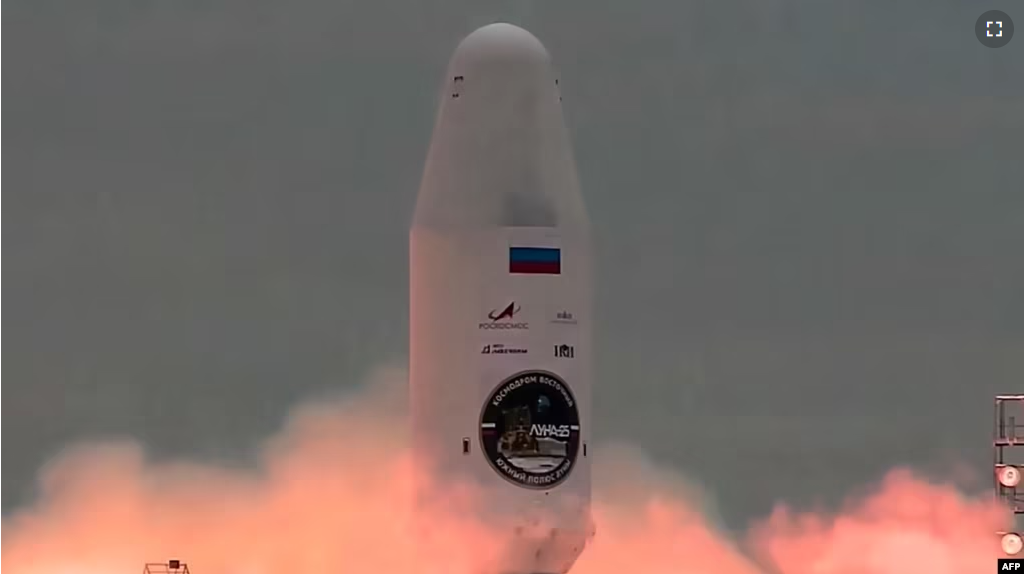Russia recently launched its first moon-landing spacecraft in 47 years. The launch comes during a time of competition by major powers including the United States, China and India to discover more about the resources held on the moon.
Russia said that it would launch further moon missions and then explore the possibility of a joint Russian-China crewed mission and even a moon base. NASA has spoken about the possibility of moon mining and a “gold rush” – a situation in which many people go quickly to a place where something valuable has been discovered.
Why are major powers so interested in what is up there?
The moon
The moon is about 384,400 kilometers from our planet.
The current thinking is that the moon was formed when a large object crashed into earth about 4.5 billion years ago. Some of the remains from the crash came together to form the moon.
Temperatures are diverse on the moon. In full Sun, they rise to 127 degrees Celsius, while in darkness they drop to about minus 173 degrees Celsius. The moon’s exosphere does not give protection against radiation from the Sun.
The first discovery of water on the moon was made in 2008 by the Indian mission Chandrayaan-1, which detected hydroxyl molecules spread across the moon’s surface. The molecules were most commonly found at the poles, NASA says.
Water is necessary for human life and also can be a source of hydrogen and oxygen. These elements can be used for rocket fuel.
The moon also likely has Helium-3.
Helium-3 is a kind of helium that is rare on earth, but NASA reports estimates of a million tons of it on the moon.
Helium-3 could provide nuclear energy in a fusion reactor. But since Helium-3 is not radioactive it would not produce dangerous waste, the European Space Agency says.
Also present on the moon are rare earth metals. Rare earth metals are used in smartphones, computers and other special technologies. Boeing, a very large American aerospace business, says the moon may have rare earth metals including candium, yttrium and the 15 lanthanides.

Moon mining
But it is not entirely clear how mining on the moon would work.
Some sort of infrastructure would have to be established on the moon. The conditions of the moon mean robots would have to do most of the hard work, though water on the moon would allow for a long-term human presence.
The laws governing moon mining are unclear and full of holes.
The United Nations 1966 Outer Space Treaty says that no nation can claim rule over the moon. In addition, the treaty says the exploration of space should be done for the good of all countries.
But lawyers say it is unclear whether or not a private business could claim rule over a part of the moon.
“Space mining is subject to relatively little existing policy or governance,” The RAND Corporation, a research group, said on its website last year.
The UN’s 1979 Moon Agreement says that no part of the moon “shall become property of any State, international intergovernmental or non-governmental organization, national organization or non-governmental entity or of any natural person.”
But, no major space power has approved the measure.
The United States in 2020 announced the Artemis Accords, named after NASA’s Artemis moon program. The agreement aims to build on existing international space law by establishing “safety zones” on the moon. Russia and China have not joined in the agreement, however.
I’m John Russell.
Guy Faulconbridge reported on this story for Reuters. John Russell adapted it for VOA Learning English.
__________________________________________________
Words in This Story
diverse — adj. different from each other
exosphere – n. the outer area of the atmosphere
infrastructure – n. the basic equipment and structures that are needed for a country or organization to function properly
entity — n. something that exists by itself : something that is separate from other things
zone — n. an area that is different from other areas in a particular way
